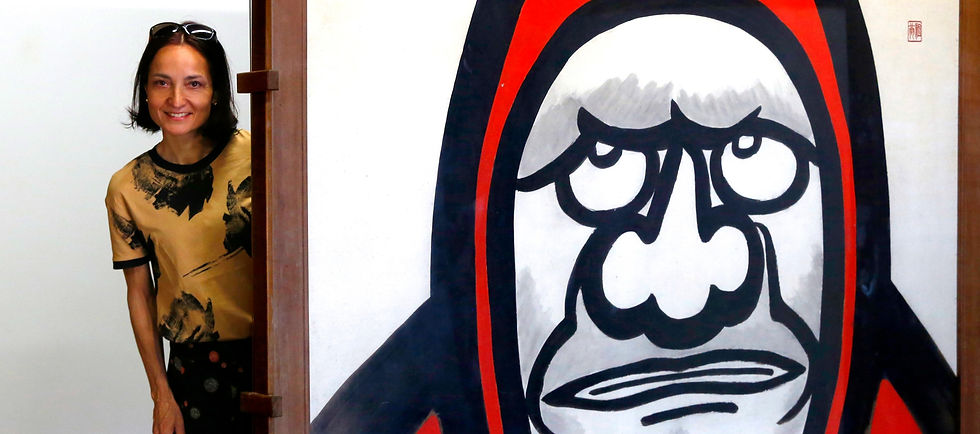
MARTA's BIO
Marta, an award-winning designer originally from Bulgaria raised in Poland, brings over 20 years of international experience to the art and design world. Her academic background includes a degree in Japanese studies from Jagiellonian University in Kraków, Poland, as well as studying East Asian art history in Germany before relocating to Japan. Fluent in five languages—Polish, Japanese, English, German, and Bulgarian—Marta's linguistic ability enables her to communicate effectively across cultures.
After completing her studies in interior design in Tokyo, Marta embarked on a successful career as an interior stylist for television and magazines in Tokyo. She further honed her skills as the chief designer for a Dutch-style flower arrangement school in Yokohama. Demonstrating her versatility, Marta expanded her repertoire by publishing her first book in Japanese. As the author, photographer, and designer, she crafted a beautifully detailed guidebook on Polish products and interior design, catering specifically to Japanese readers.
Marta's creative journey continued with her second book, "Ki-Yan's Kyoto Food & Art", where she showcased her multifaceted skills as an art director, designer, and translator, delivering an English-Japanese guidebook. The book highlights the artworks of Ki-Yan (Hideki Kimura), a contemporary Japanese mural artist.
Following her relocation to Sydney, Australia, Marta's passion for art and design led her into the picture framing industry leveraging her extensive expertise in interior and product design, interior styling, and editorial design acquired during her time in Europe and Japan. With a unique blend of knowledge and artistic flair, Marta offers her expertise in designing interiors that focus on framing and wall displays.
Inspired by artists such as Piero Fornasetti, Nicolas Party, and Yokoo Tadanori, Marta infuses her work with their creative influence, resulting in truly remarkable and distinctive designs.
Marta is the representative of renowned Japanese mural artist Kimura Hideki, also known as Ki-Yan, in Australia. She possesses the exclusive distribution rights for her book "Ki-Yan's Kyoto Food & Art" outside of Japan.

ABOUT
The story of Happy Daruma Creative Studio
I am often asked why I named my studio Happy Daruma and what 'Daruma' means? Here is the story ...
"Nana korobi ya oki"
「七転び八起き」
One of my all-time favourite Japanese proverbs speaks of falling down seven times and standing up eight, symbolizing the essence of never giving up on our dreams. This powerful saying finds its embodiment in the Daruma doll, a traditional Japanese figurine inspired by Bodhidharma, a semi-legendary Buddhist monk who is credited with founding Zen Buddhism during the 5th or 6th century.
Legend has it that Bodhidharma spent an astonishing nine years meditating unwaveringly in a cave, even going so far as to forego blinking. Such was his tenacity that despite his limbs and eyelids succumbing to exhaustion and falling off, he continued his meditation undeterred.
This extraordinary tale is why the Daruma doll has become an enduring symbol of resilience and good fortune. The doll is ingeniously designed to regain its upright position whenever it falls, mirroring the indomitable spirit of its legendary inspiration.
Initially, I had little interest in owning a Daruma doll until an unusual Daruma Doll that caught my eye in a souvenir shop in Asakusa. Without hesitation, I bought it, drawn not only to its unique facial expression but also captivated by its profound meaning.
This doll holds a special place in my heart, for it became an emblem of hope during the tumultuous period following the devastating East Japan earthquake on March 11, 2011. Amidst the chaos and wreckage that littered our home, the Daruma doll alone stood tall and unwavering, having shifted from its shelf to the floor. Its resilience amidst the fallen and broken objects left a lasting impression on me, reminding me of the strength and perseverance we can find even in the midst of great challenges.
